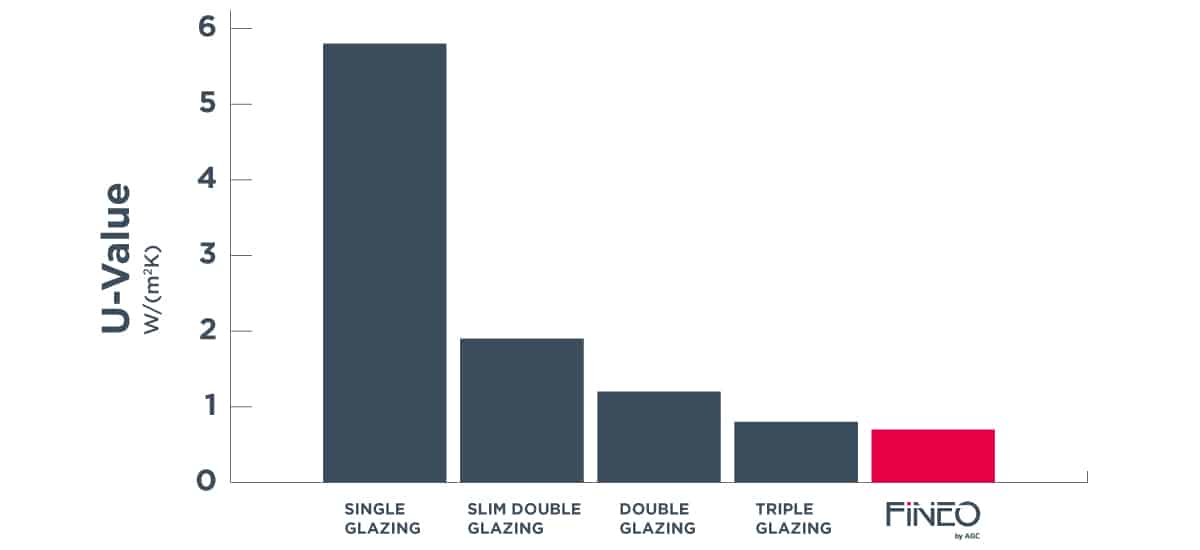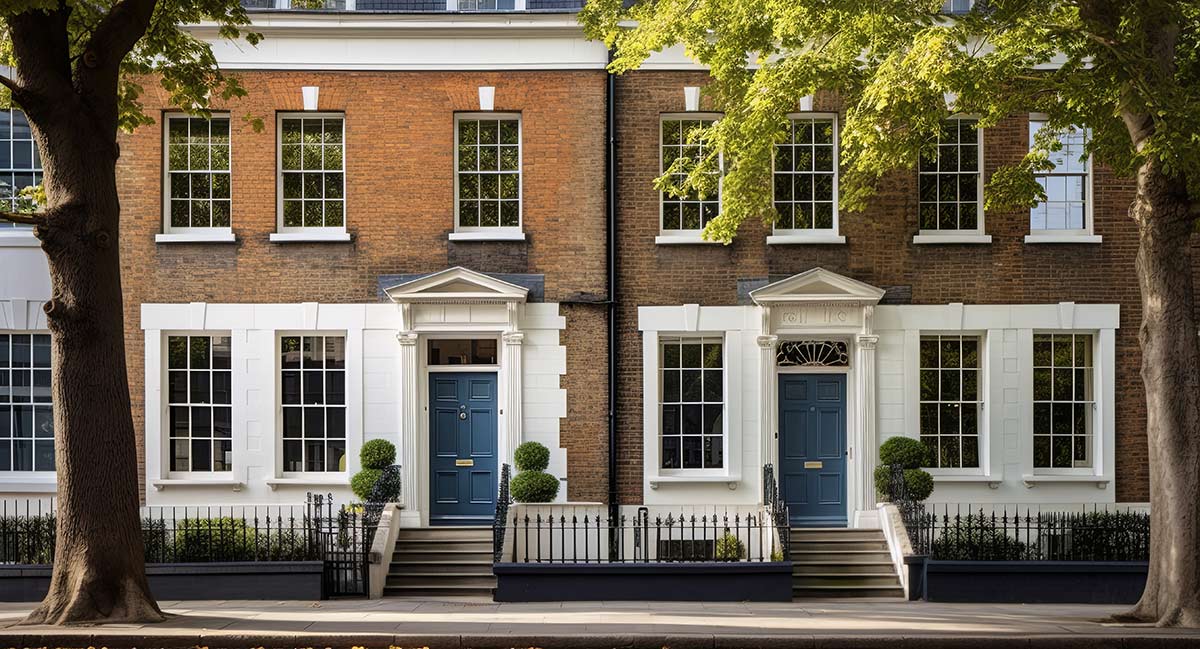Understanding the thermal efficiency of vacuum glazing (U-values)
To understand the thermal efficiency of vacuum glazing and how it differs from conventional double-and triple-glazing, we must first understand U-values.
What is a U-value?
A U-value is a measure of heat loss or, to put it another way, it measures how effective a material or component is as an insulator. The lower the U-value the better the insulation or the lower the heat loss through that material or component.
The U-value of a building component like a wall, roof or window, measures the amount of energy (heat) lost through a square metre (m2) of that material for every degree Kelvin (K) difference in temperature between the inside and the outside. The formula for measuring a U-value is W/m2K or watts per metre squared Kelvin (similar to degrees Celsius).

Let’s apply this formula to a single pane of glass and then compare it to vacuum glazing.
The U-value of a single pane of glass, as found in traditional single-glazed windows, is 5.8W/m2K, which means that for every degree of temperature difference between the outside and the inside, a square metre of glazing would lose 5.8 watts. For example, if the outside temperature on a cold day was 0 degrees and the inside temperature was 20 degrees then the heat loss would be 20 x 5.8 = 116 watts per square metre. That’s a lot of heat!
Fineo vacuum glazing has a u value of just 0.7W/m2K
If you swap single glazing for Fineo vacuum glazing then the heat loss is 20 x 0.7 = 14 watts per square metre, a saving of 102 watts per square metre. WOW!
Typical U-values and other properties of other glazing v Fineo vacuum glazing
Single Glazing | Slim Double Glazing | Double Glazing | Triple Glazing | FINEO | |
Thickness | 4mm | 11mm | 28mm | 36mm | 7.7mm |
U-value W/m2K | 5.8 | 1.9 | 1.2 | 0.8 | 0.7 |
Light Transmission | 90 | 80 | 80 | 71 | 80 |
Sound Reduction Rw (C;Ctr) dB | 29 (-2; -3) | 31 (-2; -5) | 31 (-2; -5) | 32 (-1; -5) | 35 (-2; -5) |
Solar G-value | 0.87 | 0.71 | 0.71 | 0.61 | 0.62 |




